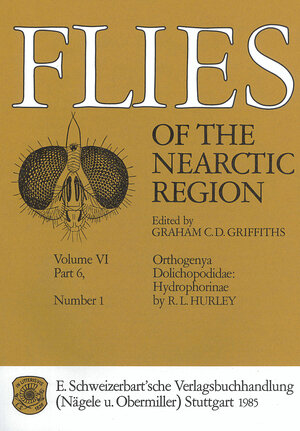
×
![Buchcover ISBN 9783510700103]()
Flies of the Nearctic Region / Orthogenya / Dolichopodidae: Hydrophorinae
von Richard L Hurley, herausgegeben von Graham C GriffithsThe limits of this subfamily have been the subject of some disagreement over the years, most of it centering on whether to include Thinophilus and Aphrosylus, or place them in separate subfamilies. We are following Robinson (1970), Ulrich (1980), and Negrobow (1981) in interpreting the group as including both. Negrobov (1981) groups the genera in 4 tribes and summarizes our present knowledge of the worldwide distribution of the subfamily.
Nearctic species included in the subfamily share the following characters: head rounded, usually broader than high, rounded posteriorly, sometimes depressed immedi- ately posterior to vertex; vertex not excavated; subcranial cavity large to very large; facial area divided by transverse suture into “epistome” and clypeus; postverticals present, sometimes continuous with upper orbitals; scape (with 2 minor exceptions) without distinct setae on dorsal surface (if present, hypopygium less than 1/2 as long as abdomen); pedicel without apical finger-like projection on medial side; lst flagellomere may be elongate or lobed; arista usually dorsal, occasionally apical; palps large to very large, resting on proboscis; cheeks sometimes well developed.
Nearctic species included in the subfamily share the following characters: head rounded, usually broader than high, rounded posteriorly, sometimes depressed immedi- ately posterior to vertex; vertex not excavated; subcranial cavity large to very large; facial area divided by transverse suture into “epistome” and clypeus; postverticals present, sometimes continuous with upper orbitals; scape (with 2 minor exceptions) without distinct setae on dorsal surface (if present, hypopygium less than 1/2 as long as abdomen); pedicel without apical finger-like projection on medial side; lst flagellomere may be elongate or lobed; arista usually dorsal, occasionally apical; palps large to very large, resting on proboscis; cheeks sometimes well developed.


